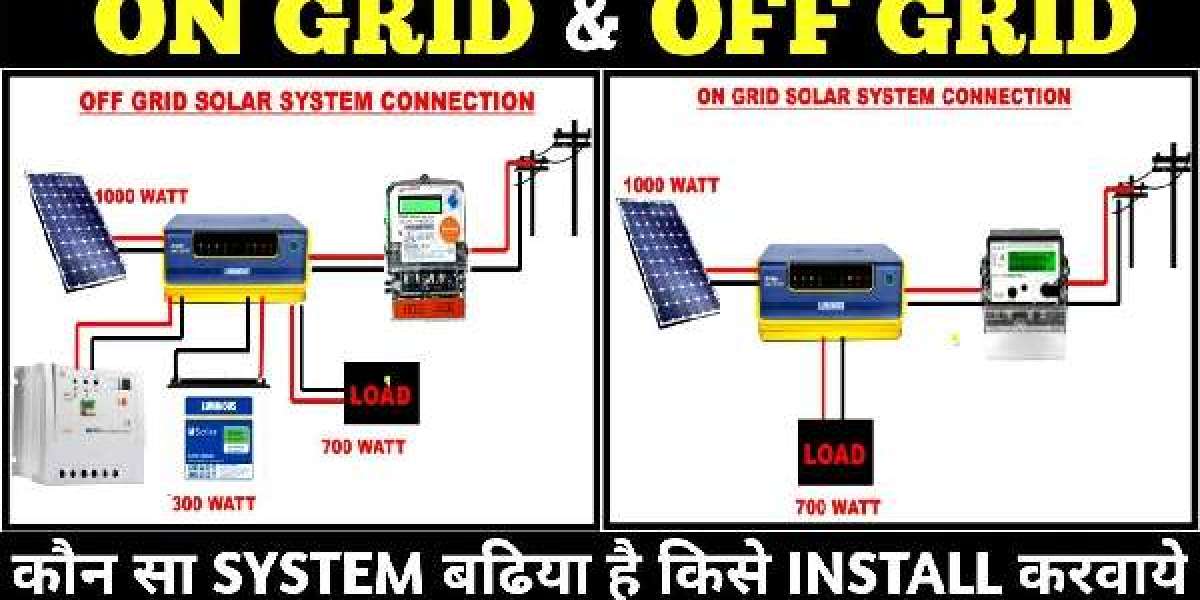A solar system encompasses a range of technologies and applications that harness the power of sunlight to generate electricity or heat for various purposes. At its core, a solar system typically consists of solar panels, also known as photovoltaic (PV) modules, which convert sunlight into electricity through the photovoltaic effect. These panels are often installed on rooftops, ground-mounted arrays, or integrated into building materials to maximize sunlight exposure.
In addition to solar panels, solar systems may include inverters, batteries, charge controllers, and other components to regulate store, and distribute the generated electricity efficiently. Solar systems can be classified into two main types: on-grid systems, which are connected to the utility grid and feed excess electricity back into it, and off-grid systems which operate independently of the grid and rely on batteries or other energy storage solutions. Solar systems offer numerous benefits, including renewable energy generation, reduced electricity bills, environmental sustainability, and energy independence. They are widely used in residential, commercial, industrial, and utility-scale applications, contributing to the transition towards a cleaner and more sustainable energy future.
What is the on-grid solar system?
An on-grid solar system is also known as a grid-connected solar system. This is a renewable energy system that is connected to the local utility grid. This type of solar system consists of solar panels installed on rooftops or ground-mounted arrays, along with inverters and other electrical components. When sunlight strikes the solar panels for home, they generate direct current (DC) electricity. The inverters then convert this DC electricity into alternating current (AC) electricity, which is compatible with the utility grid and can be used to power electrical appliances and devices in homes or businesses.
What is the off-grid solar system?
An off-grid solar system also known as a standalone or independent solar system operates independently of the utility grid, providing electricity to remote or isolated locations where grid connection is not available or practical. These systems typically consist of solar panels, batteries for energy storage, charge controllers, inverters, and sometimes backup generators. Solar panels capture sunlight and convert it into electricity, which is then stored in batteries for use when sunlight is unavailable, such as during nighttime or cloudy weather. Charge controllers regulate the flow of electricity between the solar panels and batteries, preventing overcharging or deep discharging.
1. Connection to the Grid:
· On-Grid Solar System: An on-grid solar system is connected to the local utility grid. It generates electricity from sunlight using solar panels and feeds any excess electricity back into the grid. Users typically draw electricity from the on-grid solar system when solar production is insufficient, and they may also receive credits or compensation for the surplus electricity they export to the grid.
· Off-Grid Solar System: An off-grid solar system is not connected to the utility grid. It operates independently and relies on batteries or other energy storage systems to store excess electricity generated during sunny periods when sunlight is unavailable. Off-grid systems are common in remote or rural areas where grid electricity is unavailable or prohibitively expensive to install.
2. Reliability and Redundancy:
· On-Grid Solar System: On-grid systems rely on the grid for backup power during periods of low solar production, such as at night or during cloudy weather. They provide reliability and stability but are vulnerable to grid outages.
· Off-Grid Solar System: Off-grid systems provide energy independence and resilience, as grid outages do not affect them. However, they require sufficient battery storage capacity to ensure continuous power supply during periods of low sunlight.
3. Cost and Complexity:
· On-Grid Solar System: On-grid systems are typically less expensive and less complex to install than off-grid systems because they do not require energy storage components such as batteries. Users benefit from net metering programs and incentives that offset the cost of installation and reduce electricity bills.
· Off-Grid Solar System: Off-grid solar systems are generally more expensive and complex to install due to the additional components required for energy storage and management. Users must invest in batteries and other equipment to ensure a reliable power supply, which can increase upfront costs.
4. Environmental Impact:
On-Grid Solar System: On-grid systems reduce reliance on fossil fuels and lower carbon emissions by generating clean electricity from sunlight. They contribute to environmental sustainability by offsetting grid-supplied electricity, which is often generated from non-renewable sources.
· Off-Grid Solar System: Off-grid systems also reduce carbon emissions and environmental impact by using renewable solar energy. They offer greater energy independence and help reduce dependence on centralized power generation, promoting self-sufficiency and resilience.
Conclusion - on-grid and off-grid solar systems offer distinct advantages and are suited to different applications and contexts. On-grid solar systems provide the convenience of grid connectivity, stability, and the potential for financial incentives or rebates from utilities or government programs. They are ideal for urban and suburban areas where grid electricity is readily available and can help reduce electricity bills and carbon emissions. Off-grid solar systems, on the other hand, offer energy independence, resilience, and sustainability, making them well-suited for remote or isolated locations where grid connection is not feasible. They provide reliable power in areas with unreliable grid infrastructure or no access to grid electricity at all. Despite their differences, both on-grid and off-grid solar systems contribute to the transition towards renewable energy and play a crucial role in reducing dependence on fossil fuels and mitigating climate change. Ultimately, the choice between on-grid and off-grid solar systems depends on factors such as location, energy needs, cost considerations, and environmental priorities. By harnessing the power of sunlight, both types of solar systems offer a sustainable and environmentally friendly solution for meeting energy needs and promoting a greener future.









